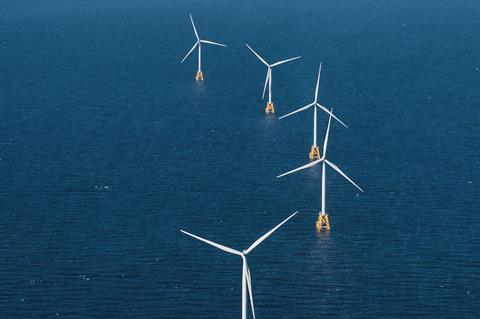Danish offshore wind energy developer Ørsted has completed a review of its US offshore portfolio. It will cease development of the Ocean Wind 1 and 2 projects, and it has taken final investment decision (FID) on the Revolution Wind project.

Projects on the US East Coast have been plagued by inflationary pressures and higher borrowing costs. Ørsted, which was planning 5 GW of development in the region, announced earlier in the year that it would be forced to walk away from some of its developments unless more government support was forthcoming.
Since the announcement, Ørsted said that these US offshore wind projects have experienced further negative developments from adverse impacts relating to supply chains, increased interest rates, and the lack of an Offshore Renewable Energy Certificate (OREC) adjustment at the Sunrise Wind project. The total impairments recognised in the interim financial report for the first nine months of 2023 amount to DKK28.4 billion (USD4.02 billion), and the majority of these DKK19.9 billion (USD2.82 billion) relate to Ocean Wind 1.
Mads Nipper, group president and ceo of Ørsted, said: “We are extremely disappointed to announce that we are ceasing the development of Ocean Wind 1 and 2. We firmly believe the US needs offshore wind to achieve its carbon emissions reduction ambition, and we remain committed to the US renewables market and truly value the efforts by the US government to support the build-up of the US offshore wind industry. However, the significant adverse developments from supply chain challenges, leading to delays in the project schedule, and rising interest rates have led us to this decision, and we will now assess the best way to preserve value while we cease development of the projects. At the same time, with an attractive forward-looking value creation, we progress the Revolution Wind project into the construction phase.”
A provision related to Ørsted ceasing the development of Ocean Wind 1 will negatively impact Q4 2023 EBITDA. The provision accounts for potential contract cancellation fees not already covered by the impairments but excludes any potential reuse value of existing contracted equipment. Ørsted currently estimates the provision to be approximately DKK 8-11 billion. (USD1.13 -1.6 billion).
The company said that these impairments and provision will impact Ørsted’s capital structure. It added that it is taking measures to support its capital structure and long-term commitment to its credit rating. In addition to cost-savings initiatives, such measures include working capital improvements such as supply chain financing, prioritisation of development activities, and portfolio rationalisation.
Ocean Wind 1 is a 1,100 MW development that would have been located 15 miles off the coast of southern New Jersey. It was scheduled to come online in 2025. Ocean Wind 2 would have a capacity of roughly 1,148 MW.
On a more promising note, Ørsted did take the FID on the 704 MW Revolution Wind project, which Ørsted owns in a 50/50 partnership with Eversource. Onshore construction has started, and offshore construction will start in 2024, with the project expected to be completed in 2025.
With regard to its other projects in the region, Ørsted said that it continues to reconfigure its Skipjack project (966 MW), located in Maryland, and expects to have clarity on its path forward in the Q4 2023.
At the Sunrise Wind project (880 MW), Ørsted welcomed New York State Energy Research and Development Authority (NYSERDA) request for information on an accelerated solicitation for offshore wind capacity, which could provide an opportunity to rebid at a price level that reflects current component and financing costs. Ørsted, which jointly owns this project with Eversource, said that it awaits the conditions of the request for proposal to determine whether to rebid or not.














